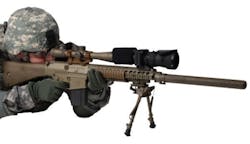Sarnoff and HRL Laboratories to develop photonic integrated circuits to enable video-like phased-array LIDAR
Sarnoff and HRL will develop active optical beam steering and sensing by developing chip-scale integrated photonic coherent beam-forming technologies that overcome the limits of opto- mechanical and electro optical systems in small packages.
DARPA envisions that a SWEEPER program will establish photonic integrated circuit (PIC) technology that will provide video frame rate beam steering speeds, and emit several beams with a total output power of 10 Watts.
Scanning laser sensors have been in use for several years. These systems often are called light direction and ranging (LIDAR), or laser direction and ranging (LADAR). The mechanisms that scan these beams have proven to be weak points until now, because scanning has been mostly restricted to opto-mechanical, acousto-optical (AO) or electro-optical (EO) techniques.
Opto-mechanical scanning devices are usually bulky and relatively slow, while AO and EO use small devices that cannot provide the steering speeds and versatility necessary for many applications, DARPA officials explain.
To compensate for these shortcomings, the SWEEPER program seeks to extend phased array beam steering to the optical domain in the near infrared spectrum -- the 0.8-to-2-micron optical range -- by developing photonic integrated circuits for optical phased arrays, which will integrate thousands of closely packed optical emitting facets, precise relative electronic phase control of these facets, and all within a small form factor, DARPA officials say.
For more information contact SRI International Sarnoff online at www.sarnoff.com, HRL Laboratories at www.hrl.com, or the DARPA MTO at www.darpa.mil/MTO.
